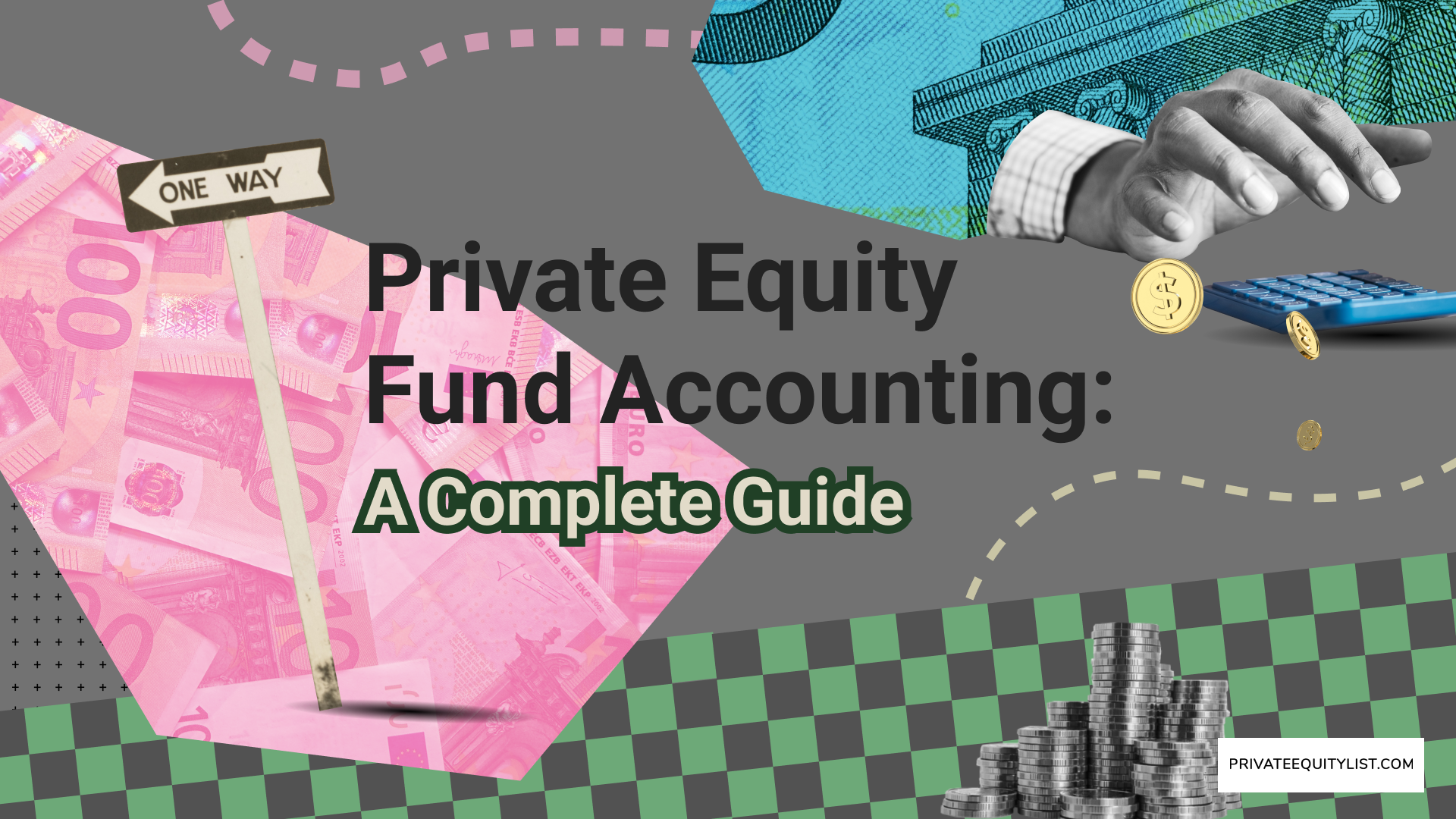Private Equity Fund Accounting: A Complete Guide

Analysis is presented by PrivateEquityList.com is a PE/VC freemium investor database platform that focuses on African, Asian and Latin America investors as well as small/mid cap funds and financing opportunities, so startups have better chances of getting funded.
If you're a private equity (PE) fund manager, an investor, or someone interested in the world of finance, you've likely realized that the financial landscape can often feel like a labyrinth. This is particularly true when you enter the realm of private equity fund accounting. But don't worry; we're here to guide you through this intricate world. We'll begin with the basics and delve into the complexities, ensuring you're well-equipped to navigate your path in this realm.
So, sit back, grab a cup of coffee, and let's explore the exciting world of private equity fund accounting.
Understanding Private Equity Fund Accounting
Private equity fund accounting involves monitoring and managing the financial affairs of private equity funds. It ensures all transactions and activities are accurately recorded, and shareholders' returns are correctly calculated.
Fund Accounting in Private Equity includes:
- Capital call and distribution processing
- Investor reporting
- Financial statement preparation
- Portfolio accounting
- Regulatory compliance
Basics of Private Equity Funds
A private equity fund is a collective investment scheme used for making investments in various equity (and to a lesser extent debt) securities. The fund is often structured as a limited partnership, with the PE firm as the general partner and the investors as limited partners.
Key elements of a PE fund include:
- Investment period: This is typically 3-5 years and is the phase during which the fund identifies and invests in companies.
- Holding period: This usually lasts 5-7 years (but can extend to 10 years or more), during which the fund seeks to increase the value of its investments.
- Exit period: This is when the fund divests its holdings, seeking to generate a return for its investors.
The PE Fund Accounting Lifecycle
Fund accounting in private equity follows a lifecycle that begins with fundraising and ends with the final distributions to investors. Here are the key stages:
- Fundraising: This is the initial stage where the PE firm seeks to raise capital from investors.
- Capital Calls/DRAWS: When the fund identifies a suitable investment, it issues a capital call to its investors.
- Investment: The capital collected is then invested in target companies.
- Management of the Portfolio: The PE firm actively manages the portfolio companies to enhance their value.
- Exit: The fund sells its investments and makes distributions to the investors.
- Final Distributions and Closing: The fund is closed after all the investments are exited, and final distributions are made.
PE Fund Accounting: Key Principles and Practices
1. Capital Calls and Distributions
Capital calls, also known as drawdowns, are requests made by the fund to its investors to provide their share of the capital for investment purposes.
- The process involves the fund sending out capital call notices to the investors detailing the amount to be contributed and the purpose of the call.
- These calls are typically given with 10-15 days notice.
- Each investor's contribution is proportionate to their commitment in the fund.
Distributions, on the other hand, refer to the returns the investors receive from the fund's investments.
- Distributions can be in the form of cash or securities.
- A vital aspect here is the 'waterfall model', which details the sequence in which the returns are distributed among the LPs (Limited Partners) and the GP (General Partner).
2. Net Asset Value (NAV) Calculation
NAV is the total value of the fund's assets less its liabilities. It's a critical metric as it is used to determine the value of the shares/units held by investors.
- Calculating NAV involves determining the fair value of the fund's investments, adding any other assets, and then subtracting the fund's liabilities.
- Given the often illiquid nature of PE fund investments, determining the fair value can be a complex process, often involving the use of specialist valuation experts.
3. Investor Reporting
Investor reporting is a crucial part of PE fund accounting.
- Investors require regular and transparent information about the fund's performance.
- Reports typically include details on capital calls, distributions, NAVs, and updates on the portfolio companies.
- The Private Equity Industry Guidelines Group (PEIGG) has provided guidelines on the content and frequency of these reports.
4. Financial Statement Preparation
PE funds are required to prepare and present financial statements to their investors regularly.
- These statements are typically prepared in accordance with the Generally Accepted Accounting Principles (GAAP) or the International Financial Reporting Standards (IFRS).
- The key financial statements include the balance sheet, income statement, statement of changes in equity, and cash flow statement.
5. Compliance with Regulations
PE funds must comply with various regulatory requirements, including those related to tax, financial reporting, and investor disclosures.
- These requirements can vary across jurisdictions, further complicating the accounting process.
- Funds often engage external auditors to ensure compliance with all regulations.
In conclusion, private equity fund accounting can indeed seem like a daunting task with its complexities. However, a clear understanding of the processes, compliance with regulations, and accurate record-keeping can make this task manageable.
Remember, the goal here is to provide transparent and accurate financial information to investors, thereby maintaining their trust and ensuring the successful operation of the PE fund. So, whether you're a PE fund manager, an investor, or a finance enthusiast, mastering PE fund accounting is a skill worth acquiring.
Keep learning, keep growing, and keep investing. Happy investing!

